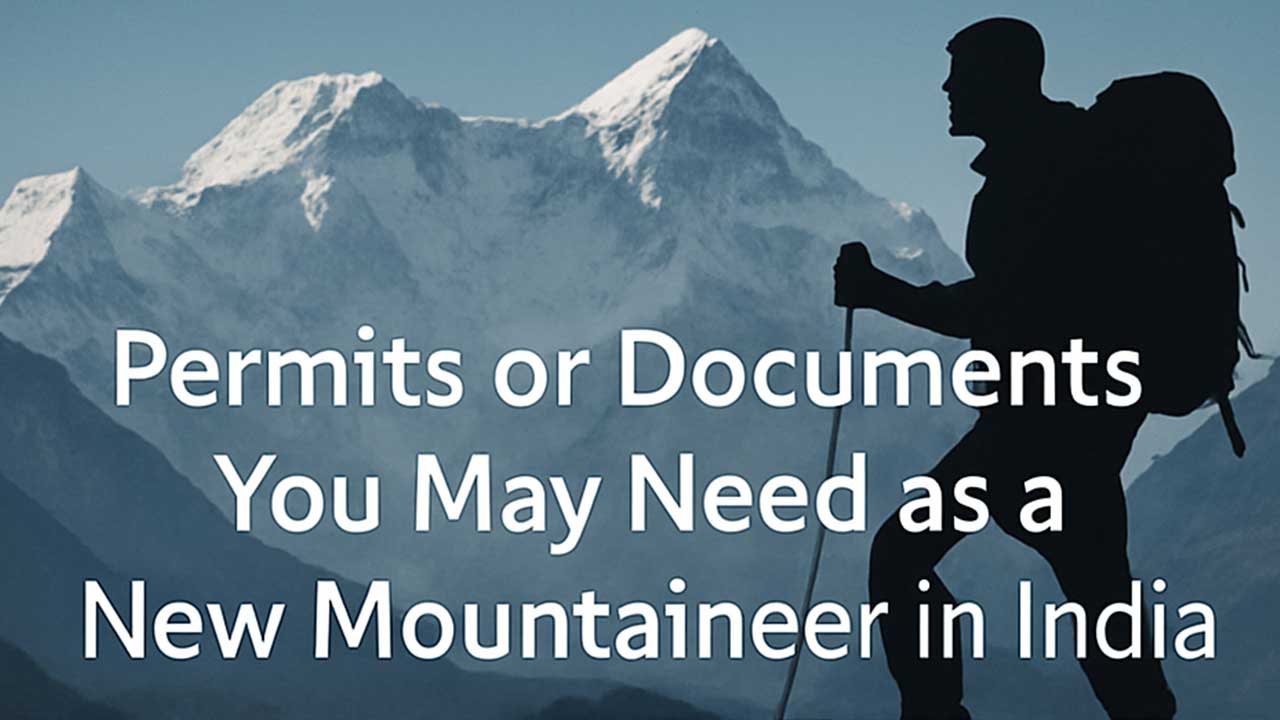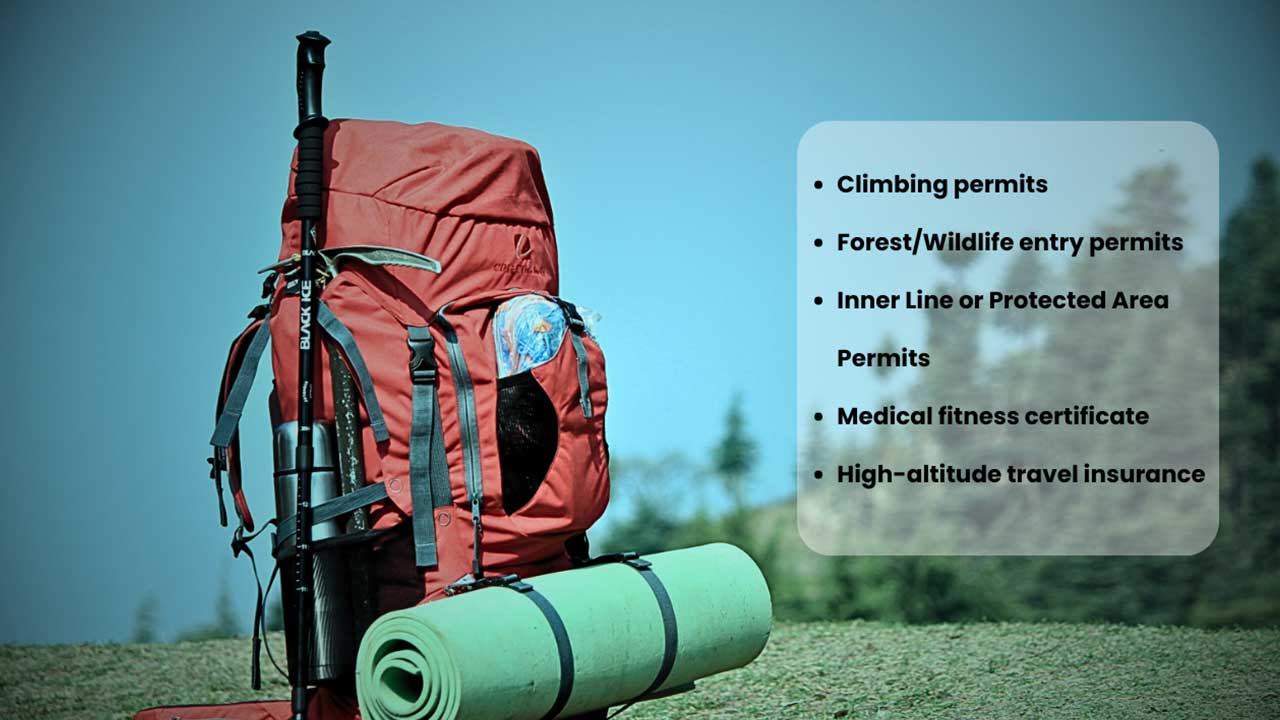5 Permits or Documents You May Need as a New Mountaineer in India
Blogs
Mountaineering in India offers unmatched thrill—from the icy ridges of Himachal Pradesh to the towering peaks of Uttarakhand and beyond. But before you strap on your crampons and ice axe, there’s an essential step many beginner mountaineers overlook: permits and legal documentation.
India’s high-altitude regions are often ecologically sensitive, strategically located, or restricted due to defense and conservation policies. This means your adventure requires more than training and gear—it requires the right paperwork.
Here are 5 crucial permits and documents every new mountaineer must secure before embarking on an expedition in India: Essential Mountaineering Permits in India
1. Inner Line Permit (ILP)
Where It’s Needed: Parts of Himachal Pradesh (e.g., Spiti), Uttarakhand, Arunachal Pradesh, Sikkim, and Ladakh.
The Inner Line Permit is mandatory for accessing certain border areas in India that are close to neighboring countries. These are sensitive zones monitored by the Indian government for security reasons.
Apply through state government portals or local administrative offices.
- Tourist Guidelines for Kinnaur District, Himachal Pradesh
- Guidelines for Foreigners in Lahaul-Spiti District, Himachal Pradesh
2. Protected Area Permit (PAP)
Where It’s Needed: Areas in Sikkim, Arunachal Pradesh, parts of Uttarakhand and Ladakh.
If you’re a foreign national planning a trek to mountain zones near international borders, a PAP is mandatory. It’s more stringent than the ILP and often requires group travel with a registered guide or agency.
For example, trekking in Nubra Valley or mountaineering near the Indo-Tibet border falls under this rule.
You’ll need to apply through the Ministry of Home Affairs or through a registered tour operator like Ascent Descent Adventures.
3. Climbing Permit from Indian Mountaineering Foundation (IMF)
Where It’s Needed: For expeditions to any recognized peak in India.
The IMF is the nodal agency that authorizes climbs in the Indian Himalayas. You’ll need a permit for peaks above 6,000 meters or those in designated climbing zones.
Application requires:
- Expedition leader details
- Medical certificates
- Route plan and base camp details
- Environmental fee and insurance
Explore these technical expeditions with full support from our experienced team.

4. Forest and Wildlife Permits
Where It’s Needed: Treks that pass through protected areas or national parks.
If your route passes through areas like Great Himalayan National Park (GHNP), Valley of Flowers, or Pin Valley, you’ll need clearance from the Forest Department. These permits are typically obtained at the last accessible town (e.g., Manali or Joshimath) and include environmental fees.
Carry ID proof, route details, and pay the conservation charges.
Solo trekking in such zones may be restricted or prohibited—group travel with guides is often mandatory.
5. Medical Fitness Certificate & Travel Insurance
Though not a permit per se, many expedition organizers, including IMF, require you to submit a fitness certificate from a registered doctor.
Additionally, high-altitude trekking or climbing insurance is now mandatory in many expeditions. It should cover:
- Altitude sickness
- Evacuation by helicopter
- Accidents or death
For foreign climbers, Indian embassies may request medical fitness and insurance proof before issuing visas for adventure travel.
Final Thoughts: Stay Legal, Stay Safe
Navigating the Indian Himalayas is more than just a test of your endurance—it’s about being prepared and informed. Missing documentation can not only halt your climb but also land you in legal trouble or fines from forest or army authorities.
When you book your expedition with Ascent Descent Adventures, we guide you through the entire permit process so you can focus on the climb—not the paperwork.
FAQs
At least 4–6 weeks prior to your expedition, especially for IMF-regulated climbs.
Yes. Foreign nationals often require additional clearances (PAP/ILP) and must climb in groups with registered Indian tour operators.
Some forest permits are available on arrival, but IMF, ILP, and PAP must be secured in advance.
Ready to Climb?
Explore Beginner-Friendly Expeditions with ADA
Contact Us to Plan Your First Himalayan Summit
Recommended Read for Expedition Planning:
- 5 Beginner-Friendly Peaks to Start Your Mountaineering Journey in India
- 5 Things to Clarify with Your Expedition Leader Before the Climb
- 5 Mistakes Beginners Make When Planning Their First Expedition
- 5 Things You’ll Wish You Packed for Base Camp